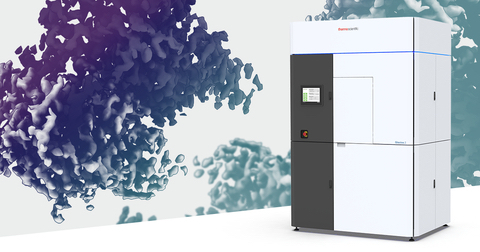
October 6, 2022 – Thermo Fisher Scientific introduced the Thermo Scientific Glacios 2 Cryo-Transmission Electron Microscope (Cryo-TEM), a powerful microscope with new automation and high-resolution imaging capabilities designed to help cryo-electron microscopy (cryo-EM) researchers of varying experience levels accelerate structure-based drug discovery. This advanced, fast and cost-efficient method for drug design may enable customers to accelerate the pace of research for debilitating disorders like Alzheimer’s, Parkinson’s, and Huntington’s diseases, as well as research for cancer and gene mutations.
The Glacios 2 Cryo-TEM includes automation features designed to extend accessibility to a range of cryo-EM techniques, including single particle analysis, cryo-electron tomography (cryo-ET) and microcrystal electron diffraction (MicroED). Additional highlights include fringe-free imaging for the acquisition of more usable images per foil hole, increased throughput compared to other commercially available optical alignment solutions and a new enclosure and hardware improvements built to offer enhanced performance compared to prior models.
This next generation solution can generate <2 angstrom 3D reconstructions and produce images faster than its predecessor. These capabilities can help users of all experience levels increase productivity at a time when rapid innovation and emerging cryo-EM applications are placing increasing demands on expert microscopists.
The new system also includes Thermo Scientific Smart EPU Software, which contains components needed for automated data acquisition, including microscope alignment and readiness assistance, plus an open API to allow for the development of solutions tailored to a user’s needs.
For pharma and biotech companies, the Glacios 2 Cryo-TEM offers high-throughput screening and imaging to enable the routine structure generation of druggable targets, including key targets of <120 kDA in size. For labs with growing demand for cryo-EM, the Glacios 2 solution helps increase accessibility to near atomic resolution structures, while improving ease-of-use and reproducibility across a variety of workflows.
